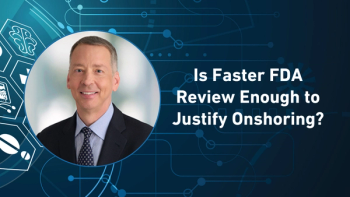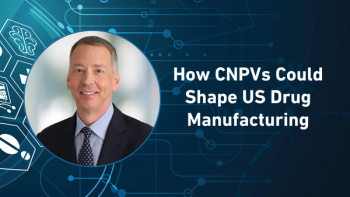
Supply Chain Planning in the Current CGT Climate
In the second part of his Pharma Commerce video interview, Mark Sawicki, PhD, Cryoport Systems’ president and CEO, explains how recent shifts in FDA leadership, funding constraints, and evolving CMC standards have each played a role in this process.
In a video interview with Pharma Commerce, Mark Sawicki, PhD, Cryoport Systems’ president and CEO, discusses the evolving state of global cell and gene therapy commercialization. Sawicki highlighted significant progress in key operational areas, noting that companies are now better prepared for commercial launches than in the past. Early challenges in manufacturing readiness have been largely resolved, with organizations now demonstrating clear strategies, scalable capacity, and well-vetted supply chains. Regulatory hurdles have also been substantially addressed, and most companies are effectively engaging primary launch sites, especially major academic medical centers, ensuring they are trained and ready for product deployment.
However, several persistent challenges remain. Reimbursement, particularly in Europe, continues to be a major hurdle—even for mature companies with marketed therapies. Another notable issue is physician education, especially outside of large teaching hospitals. Many community-based physicians lack a deep understanding of cell and gene therapies, creating a barrier to broader adoption.
Sawicki also pointed to community care engagementas an area needing attention. While major centers are prepared, regional and community sites are lagging in terms of readiness and support. According to available market data, current therapies are reaching only about 20% of the addressable patient population in the United States and Europe, with even lower uptake globally.
Finally, standardization of processes, particularly across clinical sites and within supply chain systems, remains an issue. Inconsistent procedures and infrastructure gaps at these levels hinder the ability of sites to fully support these complex therapies. Addressing these shortcomings will be critical to expanding access and realizing the full potential of cell and gene therapy worldwide.
Sawicki also comments on how supply chain expectations have shifted amid tighter funding, FDA leadership changes and evolving CMC standards; the critical role of cryopreservation, real-time logistics data and AI-enabled fulfillment in protecting product integrity and patient outcomes; what pharma leaders can borrow from CGT’s operational playbook to improve resilience across therapeutic areas; and much more.
A transcript of his conversation with PC can be found below.
PC: How have recent shifts in FDA leadership, funding constraints, and evolving CMC standards impacted supply chain planning for CGT products?
Sawicki: It's really a wait and see. A lot of folks are just taking it slowly to understand any impact. The previous administration was very supportive of cell and gene. The current administration has expressed support, but we obviously have to see that play out, and so I think a lot of folks in the industry are kind of in a wait and see modality right now around that.
From a financing standpoint, there was over $15 billion raised last year in 2024 for cell and gene, which was 30% growth over 2023, which is very positive. There's a potential of 10 EU and 17 US filings, and five to six new therapy approvals this year, representing a record number of approvals last year. That piece continues to be extremely aggressive, and as more of these therapies get into the market, the awareness improves, the visibility improves, the infrastructure improves, the standardization improves, which really ties back into the supply chain planning, and standards—all of those elements, really.
As this becomes more mainstream, there's a lot more impetus to address those issues, and we see a lot of that right now, lots of folks are earnestly looking at standardization, in particular, around supply chain, regulatory, and patient management, which should all have very positive impacts over time.
Newsletter
Stay ahead in the life sciences industry with Pharmaceutical Commerce, the latest news, trends, and strategies in drug distribution, commercialization, and market access.





